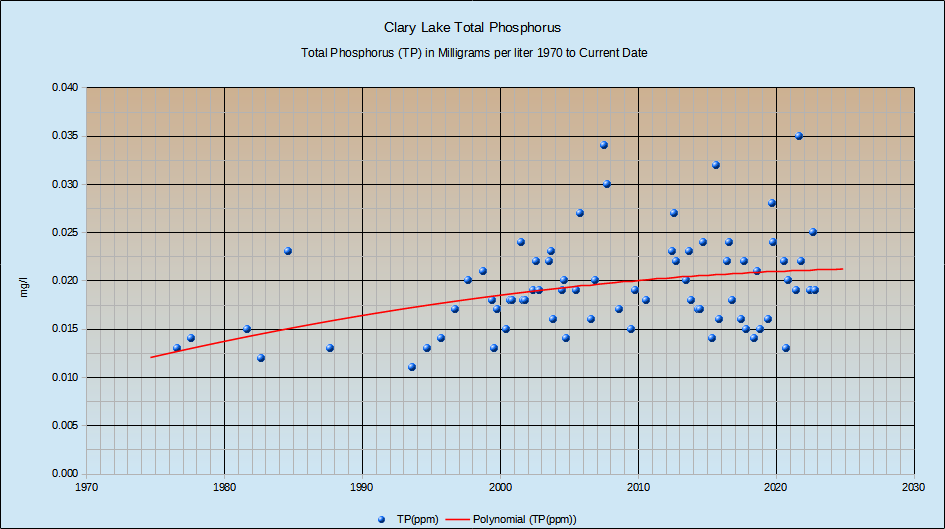We have resumed our water quality monitoring for the 2018 season. David Hodsdon and I went out this morning and collected secchi disk (transparency, see chart at left) readings and dissolved oxygen data as well as a water sample to be analyzed for Total Phosphorus content. We go out and collect data every 2 weeks during the boating season. This data gets sent to the Volunteer Lake Monitor Program (formerly VLMP, now Lake Stewards of Maine) and is also available on this site on our Water Monitoring Data page. The Secchi disk chart shows a general decline in water transparency over the last 15 years with a marked decline over the last 7-10 years, no doubt the result of generally lower water levels associated with Pleasant Pond Mill’s mismanagement of the lake level.
Decreasing transparency goes hand in hand with increasing levels of Total Phosphorus, as the chart at left shows. Phosphorus is plant food and is the primary cause of algae blooms which have been increasingly a problem in recent years. We experienced our first algae bloom in 2009 and have experienced blooms almost every year since then, the exception being 2016 and 2017 when we were in severe drought. Drought means lack of rain which results in less runoff which results in less Phosphorus entering the lake. Higher Phosphorus levels combined with lower water levels are a recipe for algae blooms.
Hopefully all this will change once the Clary Lake Association owns the dam.


